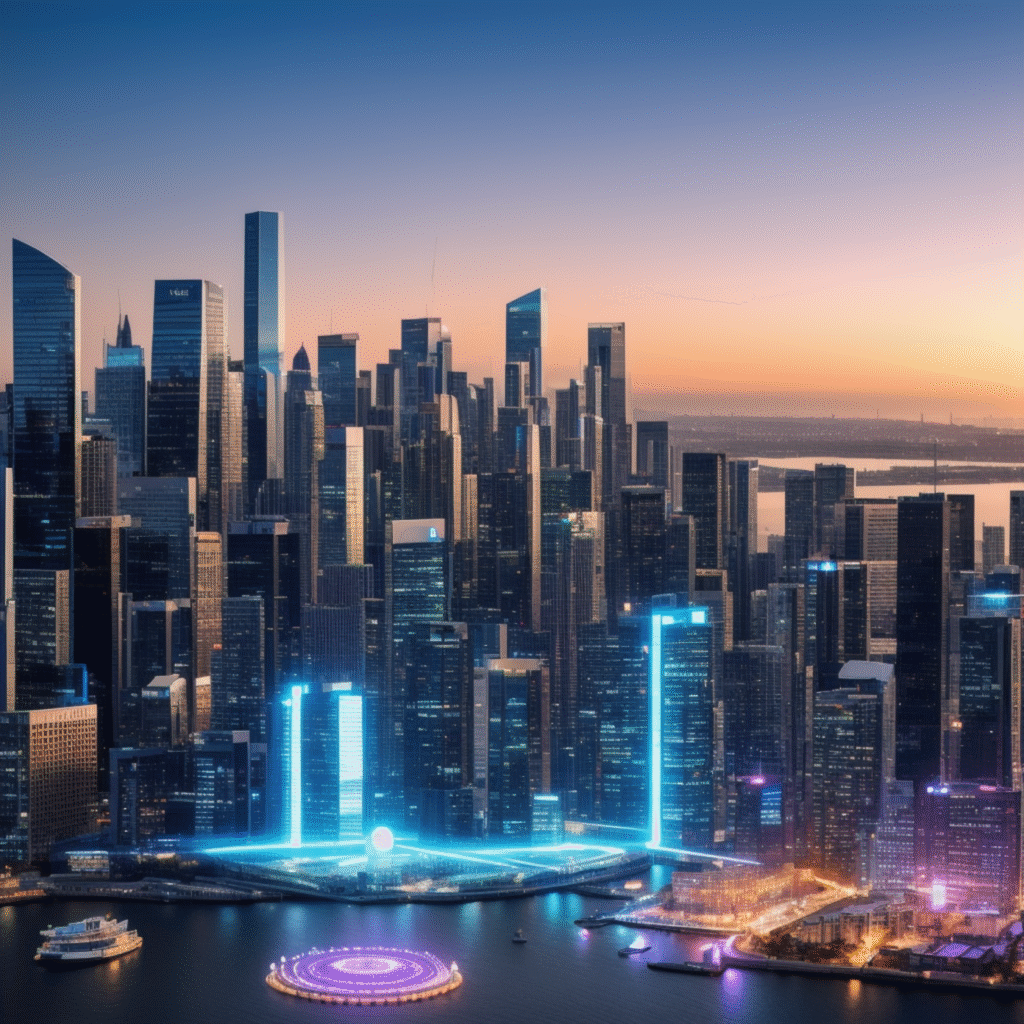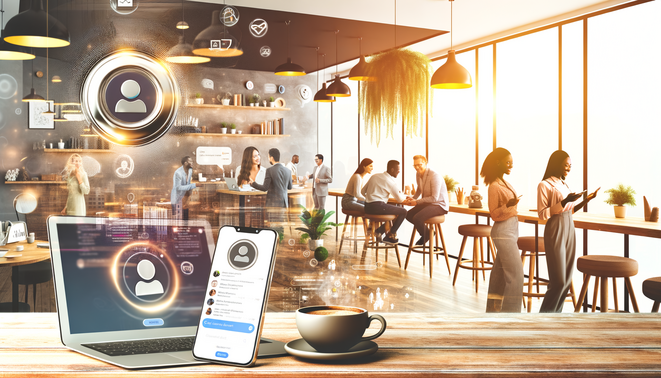Understanding AI Copyright Laws: An Overview of Current Regulations
As the integration of artificial intelligence into creative processes accelerates, understanding AI copyright laws becomes paramount for creators. Current regulations surrounding AI-generated content are still evolving, as lawmakers and industry stakeholders grapple with the unique challenges that AI poses to traditional copyright frameworks.

Key Legislation Impacting AI-Created Works
In many jurisdictions, copyright law stipulates that only original works authored by humans can be copyrighted. This raises significant questions: Can a piece of art or a novel generated by AI be considered “original”? In the U.S., the Copyright Office has stated that works created by AI without significant human intervention may not qualify for copyright protection. This view is echoed globally, as various countries begin to draft guidelines that integrate AI technology into their legal frameworks.
For instance, the World Intellectual Property Organization (WIPO) has focused on establishing guidelines regarding AI in intellectual property law, aiming to clarify how AI-generated works fit into existing copyright structures. Meanwhile, the Electronic Frontier Foundation advocates for a more inclusive interpretation that supports creators who utilize AI tools in their works.
Implications for Creators
For creators, these evolving laws mean navigating a landscape filled with uncertainty regarding AI-generated content legalities. Without clear protection for AI-generated works, creators may face the challenge of innovating without securing ownership. Furthermore, if a piece of AI-generated art or text is commercialized, the question arises: who retains the copyright—the creator who prompted the AI or the AI technology provider?
Creators are thus encouraged to document their creative processes, ensure legal protections are in place when using AI tools, and stay informed about changes in legislation. Engaging with legal experts in intellectual property will be vital for those delving into AI content creation, allowing them to safeguard their rights while harnessing this transformative technology’s capabilities.
For further insights on the implications of AI technologies in creative fields, explore related topics in our articles on ChatGPT’s impact on collaborative projects or learn how AI can revolutionize business with our guide on Harnessing ChatGPT for small businesses.
Navigating AI-Generated Content Legalities: Key Court Cases to Know
In recent years, the surge of AI-generated content has sparked numerous legal debates, prompting landmark court rulings that significantly influence AI copyright laws. Understanding these key cases is essential for creators who leverage artificial intelligence in their work.
One pivotal case is Feist Publications v. Rural Telephone Service, which established that factual compilations are not eligible for copyright protection. This ruling underpins ongoing discussions around AI-generated works, emphasizing that while the output may be creative, the underlying data used by AI can often remain unprotected under current copyright laws. This raises questions about the originality and ownership of generated content.
Another significant ruling came from Oracle America, Inc. v. Google, Inc., where the court held that Google’s use of Java API was transformative and thus considered fair use. This case has critical implications for AI trainers, who often use existing works to train models. It suggests that if AI-generated content can be argued as transformative, it might navigate the murky waters of copyright infringement.
Additionally, in Revolutionary Concepts, Inc. v. Andrew Bodnar, the court addressed the contentious issue of authorship regarding AI-generated content, stating that there is a lack of legal recognition to credit AI as an author. This means that content produced by AI may lack clear copyright ownership. Therefore, creators should consider setting robust terms of use for their AI developments to avoid potential legal entanglements.
Understanding these landmark rulings helps clarify the fluidity of AI copyright laws and the legalities surrounding AI-generated content. As the legal landscape continues to evolve, creators must stay informed about these developments to effectively safeguard their work.
For deeper insights into the implications of AI in copyright law, check out our related articles on AI tools for solopreneurs and AI-generated content best practices.
The Role of Open Licenses in AI Copyright: Opportunities and Challenges
Open licenses are increasingly shaping the landscape of AI copyright laws and AI-generated content legalities. These licenses, which allow creators to share and adapt work while granting specific usage rights, can provide both opportunities and challenges for creators in the AI domain.
One significant advantage of open licenses is the ability to foster collaboration and innovation. By allowing others to remix and build upon existing AI-generated works, creators can access a wider range of inputs to enhance their projects. For instance, tools like Stable Diffusion have gained traction due to permissive open licenses, enabling artists and developers alike to create new and varied expressions based on existing frameworks.
However, the complexities of copyright law can also impose significant risks. Open licenses, while designed to facilitate sharing, often come with specific conditions. Misinterpretation or ignorance of these terms can lead to legal disputes or unintended infringement. Creators must clearly understand the rights and responsibilities associated with these licenses to avoid potential pitfalls.
Moreover, the unpredictable nature of AI-generated content presents unique dilemmas. When AI models generate works based on open-source datasets or existing content, questions arise: Who owns the output? How does one navigate the balance between fair use and plagiarism? Understanding how AI copyright laws treat derivative works is essential for creators who wish to leverage AI without infringing on others’ rights or being vulnerable to legal action.
That said, open licenses can also offer pathways for establishing new revenue streams. By clearly defining the terms of use for their AI-generated content, creators can license their works to a broader audience, making their creations more accessible while still retaining ownership. This model is already being explored in various fields, including education and collaborative art projects.
In conclusion, while open licenses enhance creativity and distribution possibilities in the realm of AI-generated content, they require careful navigation within the framework of copyright law. Creators must stay informed about their rights and responsibilities, ensuring they leverage the benefits of open licenses without falling prey to potential legal challenges.
For those looking to explore optimal practices in using AI tools, consider checking out resources like ChatGPT Free Alternatives or Falcon 180B for more insights into the evolving tools landscape.
What Creators Must Know About Copyright Infringement in AI Art
As the landscape of AI-generated content evolves, so too does the question of copyright infringement. Artists and creators must be aware of the legal precedents emerging around AI-generated artworks. Recent cases have highlighted the complexities involved in determining ownership and originality.
One notable case involved artist Kristina Kashtanova, whose artworks were generated using AI but closely mirrored her own style. When she attempted to register these AI-generated works for copyright, she faced challenges from the United States Copyright Office. The office denied the application, arguing that the works lacked originality because they were deemed the product of a machine rather than an individual artist’s expression. This case underscores strict definitions of authorship and originality in copyright law, raising important questions about the status of AI-generated content legalities.
Another significant instance is the lawsuit involving the popular AI art generator, DALL-E. The plaintiffs argued that DALL-E infringed on several copyrighted works by using them as training data without permission. This echoes broader debates that have emerged around AI-generated content legalities. If the courts find that training an AI on copyrighted works constitutes infringement, it could fundamentally alter how AI tools are developed and used in the creative industry.
Moreover, a unique case in 2022 involved an AI artist named “Artie,” who created pieces closely resembling human artists’ works. When these pieces were auctioned, the ethical considerations of reproduction without consent became a focal point, sparking conversations about how copyright laws can adapt to encompass AI creations.
These cases serve as vital reminders that while AI tools like image generators offer new creative possibilities, creators must remain vigilant about existing copyright frameworks. Understanding the legalities surrounding AI-generated content is crucial, as missteps could lead to substantial legal repercussions.
As both case law and copyright legislation evolve, it is imperative for creators to seek legal advice and stay informed about the implications of AI technology on their work. By doing so, they can navigate this increasingly complex environment and protect their rights while embracing the creative opportunities that AI offers.
Future Trends in AI Copyright Laws: Preparing for the Upcoming Changes
As artificial intelligence continues to revolutionize the creative landscape, the legal framework surrounding AI copyright laws is also undergoing significant transformation. Content creators must stay informed about these changes to navigate the murky waters of AI-generated content legalities effectively.
One of the most pressing issues is the definition of authorship. Current copyright laws typically require a human creator for a work to be protected; however, with the rise of AI-generated creations, ambiguity in ownership arises. A Forbes article underscores the debate over whether the creators of AI algorithms, the users of AI tools, or even the AI systems themselves should hold rights to the generated content. As AI technology evolves, we may witness new legislative measures establishing clearer ownership parameters.
Additionally, as legislative bodies evaluate the implications of AI-generated works, we could see the introduction of specific provisions that recognize AI’s contributions while also safeguarding human creators. This could manifest in new licensing models, where creators might sign agreements granting limited rights to AI companies for the use of their existing works for model training, similar to how stock images are licensed. This type of adaptation is highlighted in a MIT Technology Review post, emphasizing the necessity of mutual benefits between creators and AI developers.
Furthermore, the international scope of AI copyright laws poses unique challenges. Different jurisdictions have varying approaches to copyright, which could complicate matters for global content creators. While some regions may embrace a more inclusive framework that recognizes AI as a collaborator, others may take a more restrictive stance. Understanding these legal intricacies is essential for creators planning to distribute their work across borders.
To prepare for these upcoming changes, content creators should familiarize themselves with both current and potential future AI copyright legislation. Tools like AI productivity apps can aid in documenting and tracking the evolution of their creative outputs, ensuring they are well-positioned should legal clarifications arise.
Overall, as discussions around AI-generated content legalities gain momentum, creators must proactively engage with legal developments to safeguard their rights while maximizing the potential of AI collaboration in their work.
Sources
- U.S. Copyright Office – Circular 1: Copyright Basics
- Electronic Frontier Foundation – Why AI Copyright Law Matters for Researchers and Creative Professionals
- Forbes – What Happens When AI Creates the Content: Who Owns It and Why It Matters
- Lexology – Oracle America, Inc. v. Google, Inc. Case Summary
- MIT Technology Review – Copyright, AI Art, and Legal Rights
- World Intellectual Property Organization – Artificial Intelligence and Intellectual Property
- The Verge – Revolutionary Concepts, Inc. v. Andrew Bodnar


